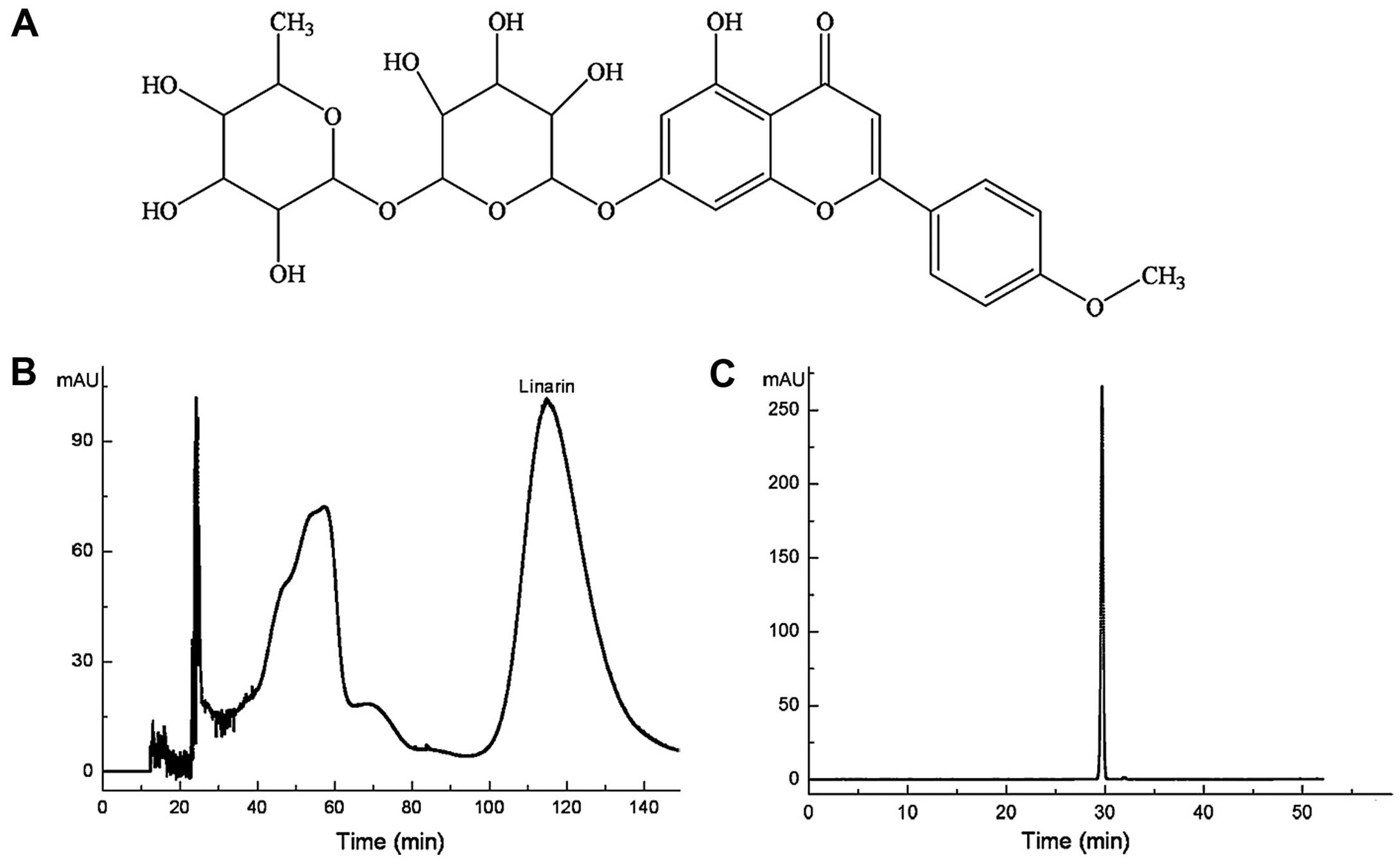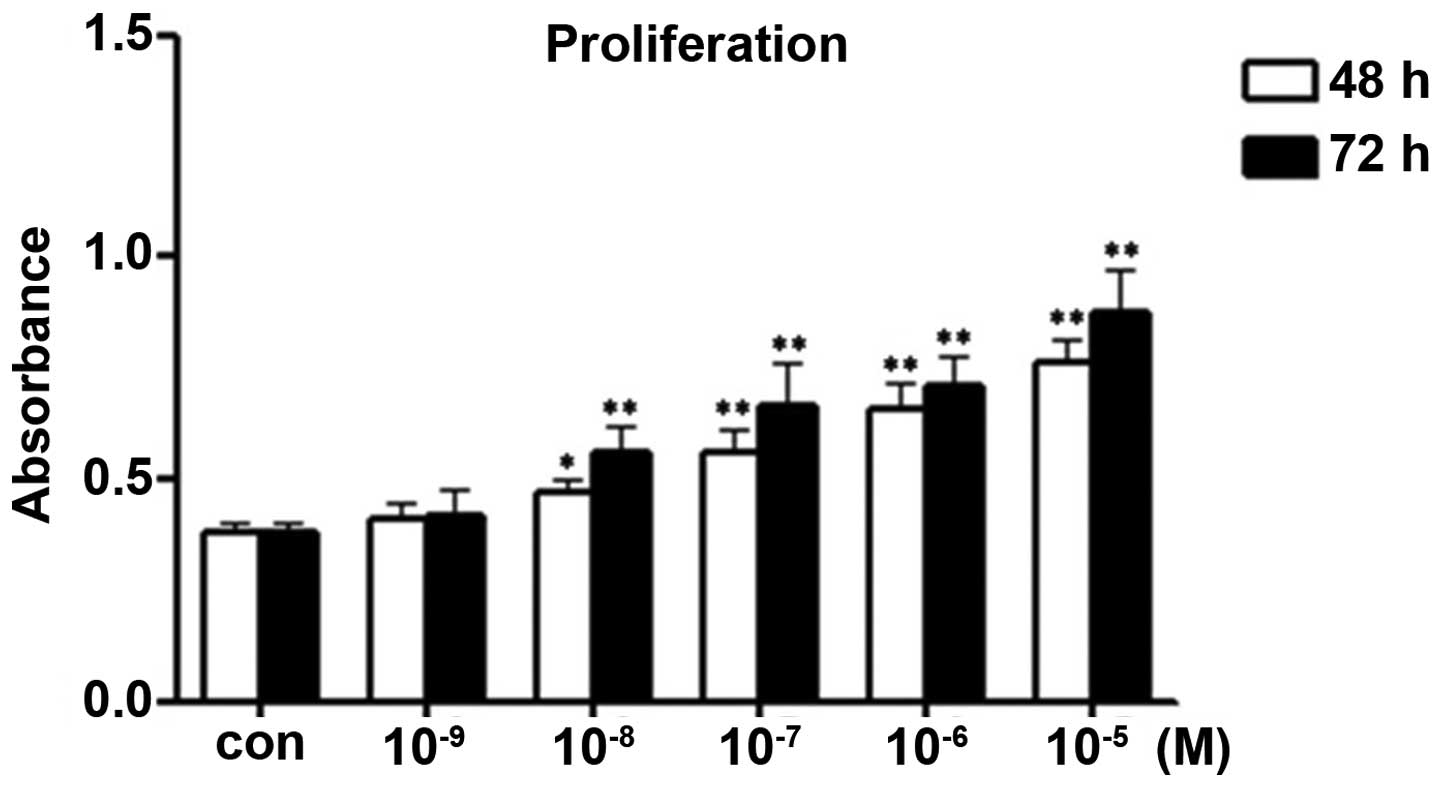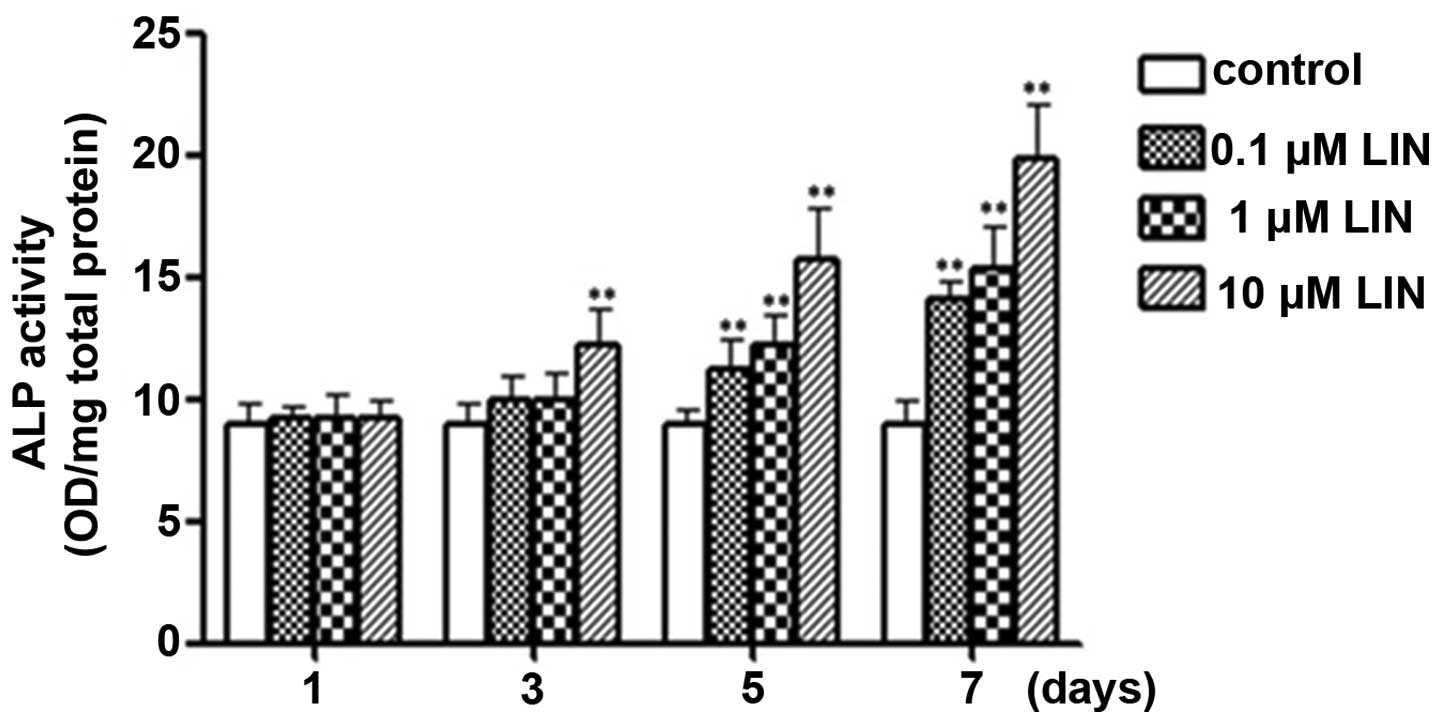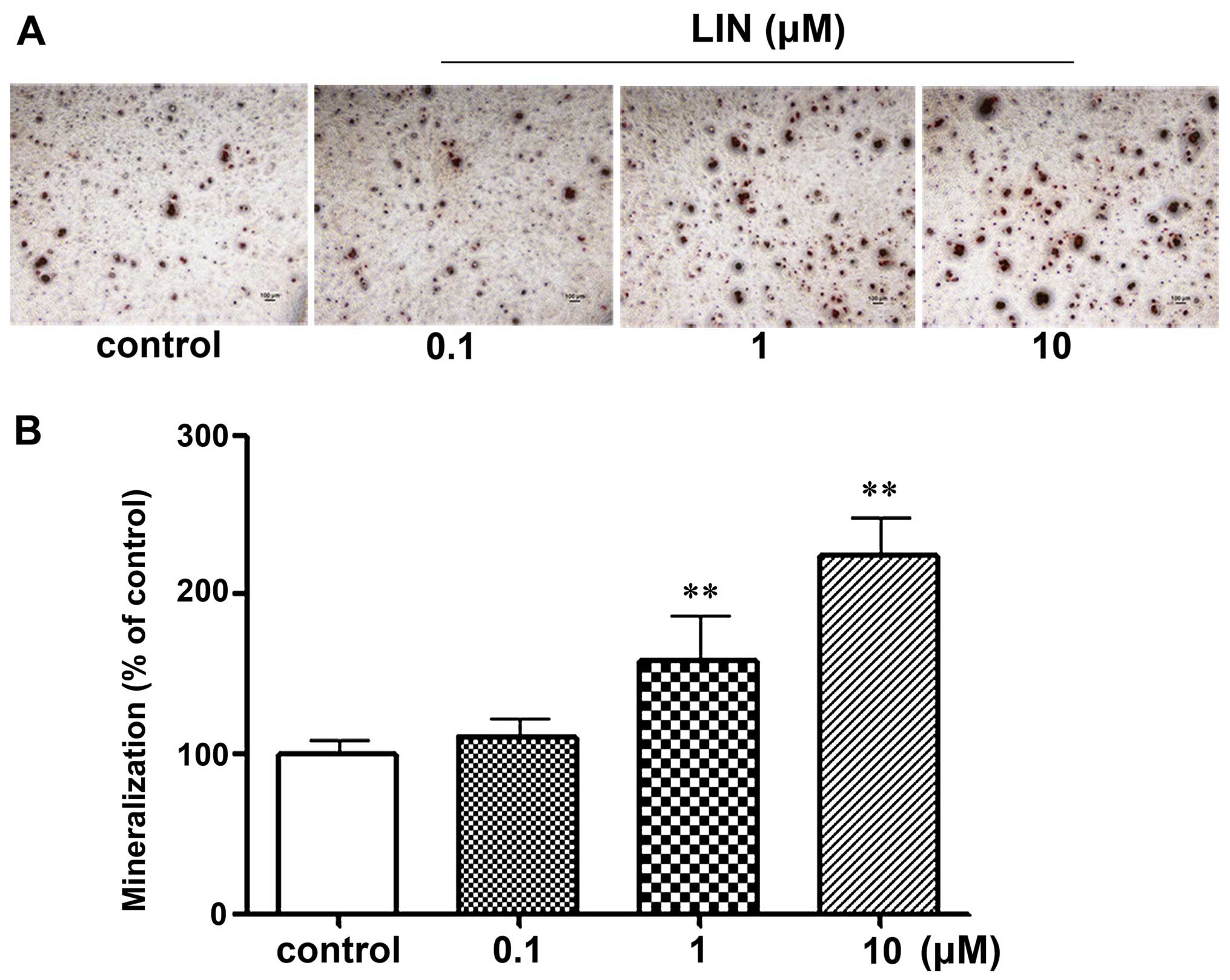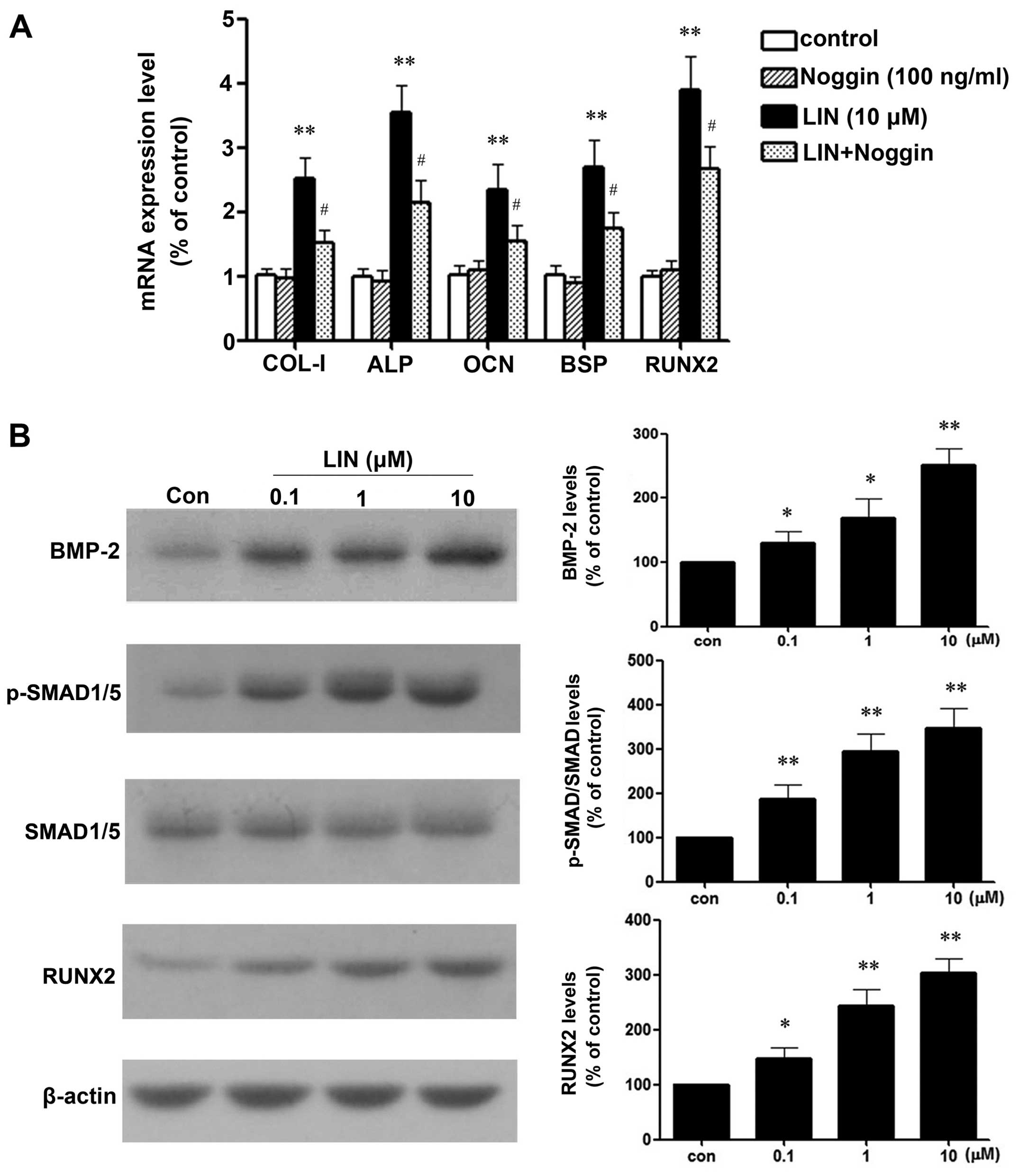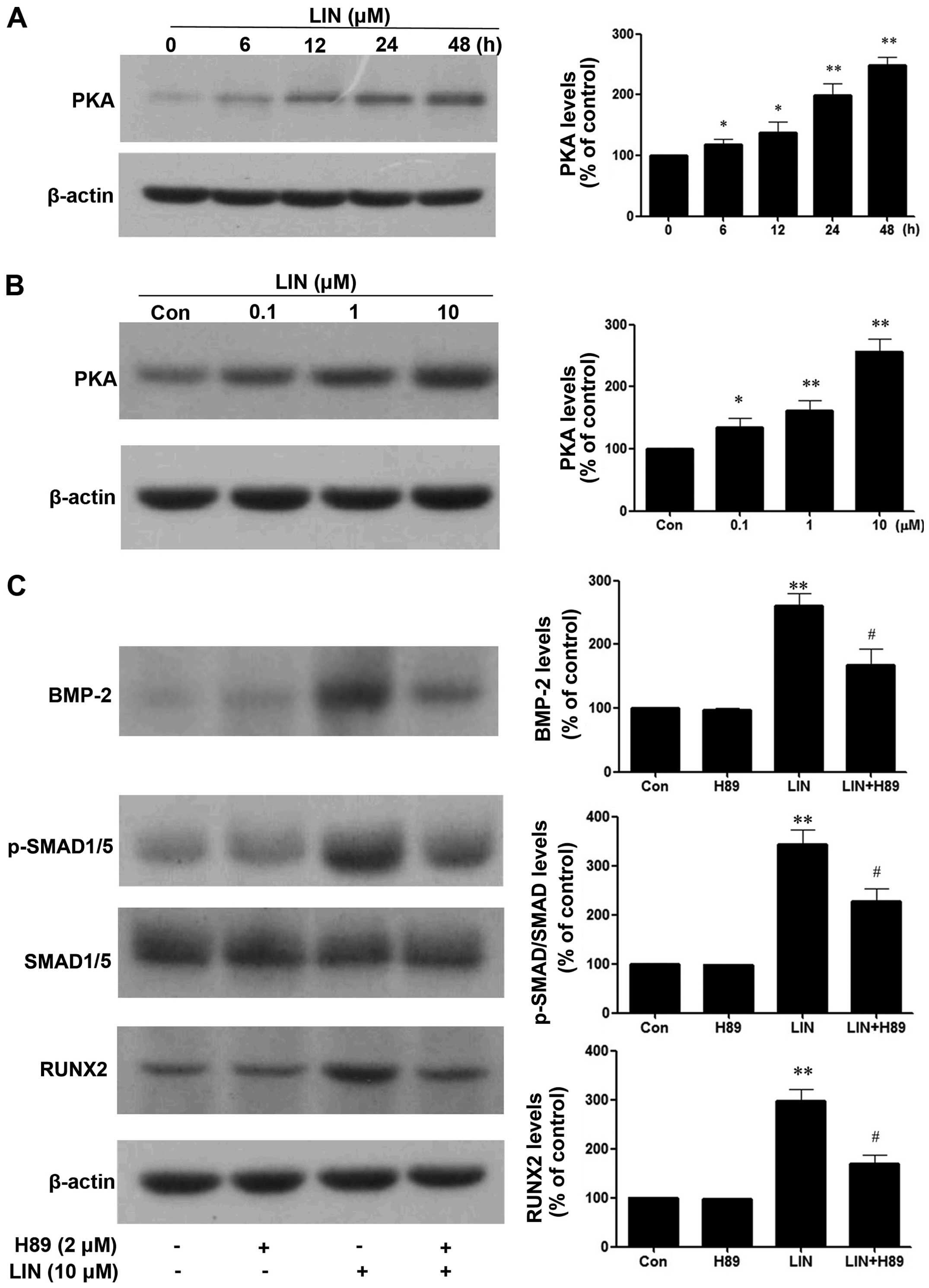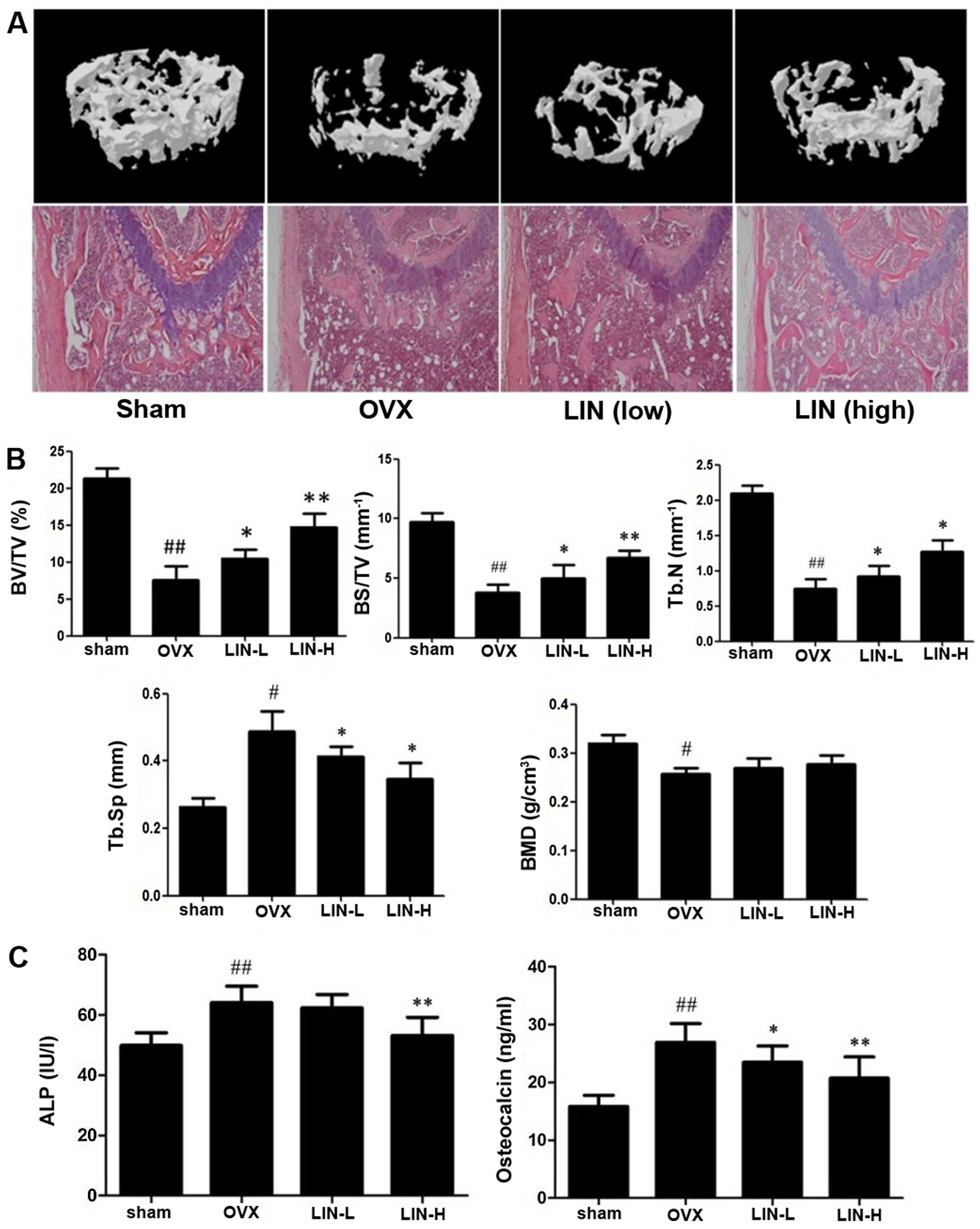|
1
|
Ducy P, Schinke T and Karsenty G: The
osteoblast: a sophisticated fibroblast under central surveillance.
Science. 289:1501–1504. 2000. View Article : Google Scholar : PubMed/NCBI
|
|
2
|
Teitelbaum SL: Bone resorption by
osteoclasts. Science. 289:1504–1508. 2000. View Article : Google Scholar : PubMed/NCBI
|
|
3
|
Isenbarger DW and Chapin BL: Osteoporosis.
Current pharmacologic options for prevention and treatment.
Postgrad Med. 101:129–132. 136–137. 141–142. 1997. View Article : Google Scholar : PubMed/NCBI
|
|
4
|
Orija IB and Mehta A: Hormone replacement
therapy: current controversies. Clin Endocrinol (Oxf). 59:6572003.
View Article : Google Scholar
|
|
5
|
Canalis E, Economides AN and Gazzerro E:
Bone morphogenetic proteins, their antagonists, and the skeleton.
Endocr Rev. 24:218–235. 2003. View Article : Google Scholar : PubMed/NCBI
|
|
6
|
Sykaras N and Opperman LA: Bone
morphogenetic proteins (BMPs): how do they function and what can
they offer the clinician? J Oral Sci. 45:57–73. 2003. View Article : Google Scholar : PubMed/NCBI
|
|
7
|
Phimphilai M, Zhao Z, Boules H, Roca H and
Franceschi RT: BMP signaling is required for RUNX2-dependent
induction of the osteoblast phenotype. J Bone Miner Res.
21:637–646. 2006. View Article : Google Scholar : PubMed/NCBI
|
|
8
|
Lee MH, Kwon TG, Park HS, Wozney JM and
Ryoo HM: BMP-2-induced Osterix expression is mediated by Dlx5 but
is independent of Runx2. Biochem Biophys Res Commun. 309:689–694.
2003. View Article : Google Scholar : PubMed/NCBI
|
|
9
|
Pasqualucci L, Kitaura Y, Gu H and
Dalla-Favera R: PKA-mediated phosphorylation regulates the function
of activation-induced deaminase (AID) in B cells. Proc Natl Acad
Sci USA. 103:395–400. 2006. View Article : Google Scholar : PubMed/NCBI
|
|
10
|
Skalhegg BS and Tasken K: Specificity in
the cAMP/PKA signaling pathway. Differential expression,
regulation, and subcellular localization of subunits of PKA. Front
Biosci. 5:D678–D693. 2000. View
Article : Google Scholar : PubMed/NCBI
|
|
11
|
Lo KW, Kan HM, Ashe KM and Laurencin CT:
The small molecule PKA-specific cyclic AMP analogue as an inducer
of osteoblast-like cells differentiation and mineralization. J
Tissue Eng Regen Med. 6:40–48. 2012. View
Article : Google Scholar
|
|
12
|
Li H, Jeong HM, Choi YH, Kim JH, Choi JK,
Yeo CY, Jeong HG, Jeong TC, Chun C and Lee KY: Protein kinase a
phosphorylates Dlx3 and regulates the function of Dlx3 during
osteoblast differentiation. J Cell Biochem. 115:2004–2011.
2014.PubMed/NCBI
|
|
13
|
He S, Choi YH, Choi JK, Yeo CY, Chun C and
Lee KY: Protein kinase A regulates the osteogenic activity of
Osterix. J Cell Biochem. 115:1808–1815. 2014. View Article : Google Scholar : PubMed/NCBI
|
|
14
|
Sassi AB, Harzallah-Skhiri F, Bourgougnon
N and Aouni M: Antimicrobial activities of four Tunisian
Chrysanthemum species. Indian J Med Res. 127:183–192.
2008.PubMed/NCBI
|
|
15
|
Liu Q, Liu H, Yuan Z, Wei D and Ye Y:
Evaluation of antioxidant activity of chrysanthemum extracts and
tea beverages by gold nanoparticles-based assay. Colloids Surf B
Biointerfaces. 92:348–352. 2012. View Article : Google Scholar : PubMed/NCBI
|
|
16
|
He J, Chen F, Chen S, Lv G, Deng Y, Fang
W, Liu Z, Guan Z and He C: Chrysanthemum leaf epidermal surface
morphology and antioxidant and defense enzyme activity in response
to aphid infestation. J Plant Physiol. 168:687–693. 2011.
View Article : Google Scholar
|
|
17
|
Marongiu B, Piras A, Porcedda S, Tuveri E,
Laconi S, Deidda D and Maxia A: Chemical and biological comparisons
on super-critical extracts of Tanacetum cinerariifolium (Trevir)
Sch Bip with three related species of chrysanthemums of Sardinia
(Italy). Nat Prod Res. 23:190–199. 2009. View Article : Google Scholar
|
|
18
|
Kim YH, Lee YS and Choi EM: Linarin
isolated from Buddleja officinalis prevents hydrogen
peroxide-induced dysfunction in osteoblastic MC3T3-E1 cells. Cell
Immunol. 268:112–116. 2011. View Article : Google Scholar : PubMed/NCBI
|
|
19
|
Suh KS, Rhee SY, Jung WW, Kim NJ, Jang YP,
Kim HJ, Kim MK, Choi YK and Kim YS: Chrysanthemum zawadskii extract
protects osteoblastic cells from highly reducing sugar-induced
oxidative damage. Int J Mol Med. 32:241–250. 2013.PubMed/NCBI
|
|
20
|
Han S, Sung KH, Yim D, Lee S, Lee CK, Ha
NJ and Kim K: The effect of linarin on LPS-induced cytokine
production and nitric oxide inhibition in murine macrophages cell
line RAW264.7. Arch Pharm Res. 25:170–177. 2002. View Article : Google Scholar : PubMed/NCBI
|
|
21
|
Lou H, Fan P, Perez RG and Lou H:
Neuroprotective effects of linarin through activation of the
PI3K/Akt pathway in amyloid-β-induced neuronal cell death. Bioorg
Med Chem. 19:4021–4027. 2011. View Article : Google Scholar : PubMed/NCBI
|
|
22
|
Qiaoshan Y, Suhong C, Minxia S, Wenjia M,
Bo L and Guiyuan L: preparative purification of linarin extracts
from Dendranthema indicum flowers and evaluation of its
antihypertensive effect. Evid Based Complement Alternat Med.
2014:3942762014. View Article : Google Scholar : PubMed/NCBI
|
|
23
|
Li J, Zhang X, Yu Q, Fu X and Wang W:
One-step separation of four flavonoids from Herba Salviae Plbeiae
by HSCCC. J Chromatogr Sci. 52:1288–1293. 2014. View Article : Google Scholar : PubMed/NCBI
|
|
24
|
Yang RS, Lin WL, Chen YZ, Tang CH, Huang
TH, Lu BY and Fu WM: Regulation by ultrasound treatment on the
integrin expression and differentiation of osteoblasts. Bone.
36:276–283. 2005. View Article : Google Scholar : PubMed/NCBI
|
|
25
|
Wedemeyer C, Xu J, Neuerburg C,
Landgraeber S, Malyar NM, von Knoch F, Gosheger G, von Knoch M,
Löer F and Saxler G: Particle-induced osteolysis in
three-dimensional micro-computed tomography. Calcif Tissue Int.
81:394–402. 2007. View Article : Google Scholar : PubMed/NCBI
|
|
26
|
Bellows CG, Aubin JE and Heersche JN:
Initiation and progression of mineralization of bone nodules formed
in vitro: the role of alkaline phosphatase and organic phosphate.
Bone Miner. 14:27–40. 1991. View Article : Google Scholar : PubMed/NCBI
|
|
27
|
Hallahan AR, Pritchard JI, Chandraratna
RA, Ellenbogen RG, Geyer JR, Overland RP, Strand AD, Tapscott SJ
and Olson JM: BMP-2 mediates retinoid-induced apoptosis in
medulloblastoma cells through a paracrine effect. Nat Med.
9:1033–1038. 2003. View
Article : Google Scholar : PubMed/NCBI
|
|
28
|
Franceschi RT and Xiao G: Regulation of
the osteoblast-specific transcription factor, Runx2: responsiveness
to multiple signal transduction pathways. J Cell Biochem.
88:446–454. 2003. View Article : Google Scholar : PubMed/NCBI
|
|
29
|
Martin TJ and Sims NA: Osteoclast-derived
activity in the coupling of bone formation to resorption. Trends
Mol Med. 11:76–81. 2005. View Article : Google Scholar : PubMed/NCBI
|
|
30
|
Schilling T, Ebert R, Raaijmakers N,
Schütze N and Jakob F: Effects of phytoestrogens and other
plant-derived compounds on mesenchymal stem cells, bone maintenance
and regeneration. J Steroid Biochem Mol Biol. 139:252–261. 2014.
View Article : Google Scholar
|
|
31
|
Lian JB and Stein GS: Concepts of
osteoblast growth and differentiation: basis for modulation of bone
cell development and tissue formation. Crit Rev Oral Biol Med.
3:269–305. 1992.PubMed/NCBI
|
|
32
|
Gordon JA, Tye CE, Sampaio AV, Underhill
TM, Hunter GK and Goldberg HA: Bone sialoprotein expression
enhances osteoblast differentiation and matrix mineralization in
vitro. Bone. 41:462–473. 2007. View Article : Google Scholar : PubMed/NCBI
|
|
33
|
Jia TL, Wang HZ, Xie LP, Wang XY and Zhang
RQ: Daidzein enhances osteoblast growth that may be mediated by
increased bone morphogenetic protein (BMP) production. Biochem
Pharmacol. 65:709–715. 2003. View Article : Google Scholar : PubMed/NCBI
|
|
34
|
Takuwa Y, Ohse C, Wang EA, Wozney JM and
Yamashita K: Bone morphogenetic protein-2 stimulates alkaline
phosphatase activity and collagen synthesis in cultured
osteoblastic cells, MC3T3-E1. Biochem Biophys Res Commun.
174:96–101. 1991. View Article : Google Scholar : PubMed/NCBI
|
|
35
|
Miyazono K: Signal transduction by bone
morphogenetic protein receptors: functional roles of Smad proteins.
Bone. 25:91–93. 1999. View Article : Google Scholar : PubMed/NCBI
|
|
36
|
Lian JB, Javed A, Zaidi SK, Lengner C,
Montecino M, van Wijnen AJ, Stein JL and Stein GS: Regulatory
controls for osteoblast growth and differentiation: role of
Runx/Cbfa/AMl factors. Crit Rev Eukaryot Gene Expr. 14:1–41. 2004.
View Article : Google Scholar : PubMed/NCBI
|
|
37
|
Ducy P, Zhang R, Geoffroy V, Ridall AL and
Karsenty G: Osf2/Cbfa1: a transcriptional activator of osteoblast
differentiation. Cell. 89:747–754. 1997. View Article : Google Scholar : PubMed/NCBI
|
|
38
|
Beavo JA and Brunton LL: Cyclic nucleotide
research - still expanding after half a century. Nat Rev Mol Cell
Biol. 3:710–718. 2002. View
Article : Google Scholar : PubMed/NCBI
|
|
39
|
Wu X, Zeng LH, Taniguchi T and Xie QM:
Activation of PKA and phosphorylation of sodium-dependent vitamin C
transporter 2 by prostaglandin E2 promote osteoblast-like
differentiation in MC3T3-E1 cells. Cell Death Differ. 14:1792–1801.
2007. View Article : Google Scholar : PubMed/NCBI
|
|
40
|
Siddappa R, Martens A, Doorn J, Leusink A,
Olivo C, Licht R, van Rijn L, Gaspar C, Fodde R, Janssen F, et al:
cAMP/PKA pathway activation in human mesenchymal stem cells in
vitro results in robust bone formation in vivo. Proc Natl Acad Sci
USA. 105:7281–7286. 2008. View Article : Google Scholar : PubMed/NCBI
|
|
41
|
Ohta Y, Nakagawa K, Imai Y, Katagiri T,
Koike T and Takaoka K: Cyclic AMP enhances Smad-mediated BMP
signaling through PKA-CREB pathway. J Bone Miner Metab. 26:478–484.
2008. View Article : Google Scholar : PubMed/NCBI
|
|
42
|
Xiao G, Jiang D, Thomas P, Benson MD, Guan
K, Karsenty G and Franceschi RT: MAPK pathways activate and
phosphorylate the osteoblast-specific transcription factor, Cbfa1.
J Biol Chem. 275:4453–4459. 2000. View Article : Google Scholar : PubMed/NCBI
|
|
43
|
Kanazawa I, Yamaguchi T, Yano S, Yamauchi
M, Yamamoto M and Sugimoto T: Adiponectin and AMP kinase activator
stimulate proliferation, differentiation, and mineralization of
osteoblastic MC3T3-E1 cells. BMC Cell Biol. 8:512007. View Article : Google Scholar : PubMed/NCBI
|
|
44
|
Turner RT, Vandersteenhoven JJ and Bell
NH: The effects of ovariectomy and 17 beta-estradiol on cortical
bone histomor-phometry in growing rats. J Bone Miner Res.
2:115–122. 1987. View Article : Google Scholar : PubMed/NCBI
|















